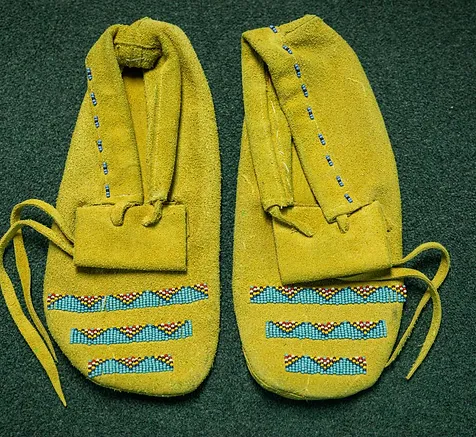Indigenous Artifacts
These artifacts are shared by our friend, Fred Saunders
Fred has developed a lifelong interest in First Nations history, culture, traditions, ceremonies and historical lifestyles. Fred
believes trust is earned through demonstrating compassion and understanding. He has been working with the Calgary
Exhibition and Stampede since 1974, particularly with the Calgary Stampede Elbow River Camp events.
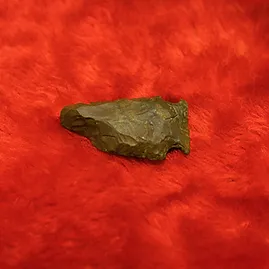
Brown discarded projectile point (arrow or atlatl)
The Besant culture began about
2,000 years ago in the southern parts
of Manitoba, Saskatchewan, and
Alberta.
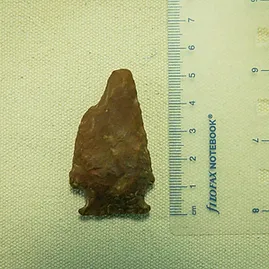
The Besant projectile point technology
started about 1,900 years ago and
ended about 1,300 years ago.This
point suffered a catastrophic mistake
when a portion of the stone broke
near the point and the flint-knapper
(tool-maker) simply tossed it aside and
abandoned it.
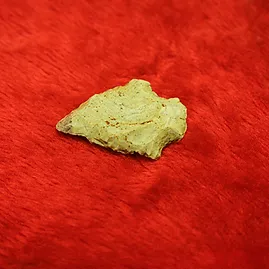
Light-colored chert knife
A Chert is a hard-grained
sedimentary rock composed mostly
of quartz. It is commonly used to
make stone tools.
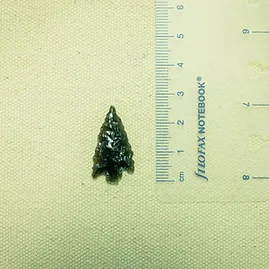
Small, black projectile point
Obsidian is the stone and the point
could have been used for small
game, such as rabbits, beavers and
birds. It could also have been used as
a pendant on a necklace worn by a
man or a woman.
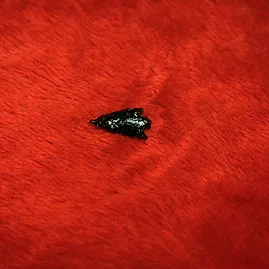
Obsidian is a glass-like stone
created by the extreme heat of a
volcano.
The age of this artifact would be at least
1,000 years. It was found in the Hand
Hills area of Southeastern Alberta
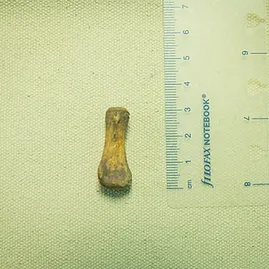
Small Bone
This bone comes from the tail of a
buffalo. It was found at a buffalo jump
near Calgary.
Stone Hammer
Thousands of these have been collected in Southern Alberta
over the years. Most self-respecting farmers and ranchers use
one as a doorstop! No distinctive technologies developed,
therefore aging is impossible. A curator at Glenbow Museum
shared they could be as old as 5,000 years or as recent as only
a few years ago. In the 1990’s, he said there was a family in
Saskatchewan that still uses one today. One of these shows
considerably more than craftsmanship the other. One would
be used like we would use a kitchen utensil and the better
one may have been used for special occasions only, maybe
to impress important visitors or as a display of wealth.
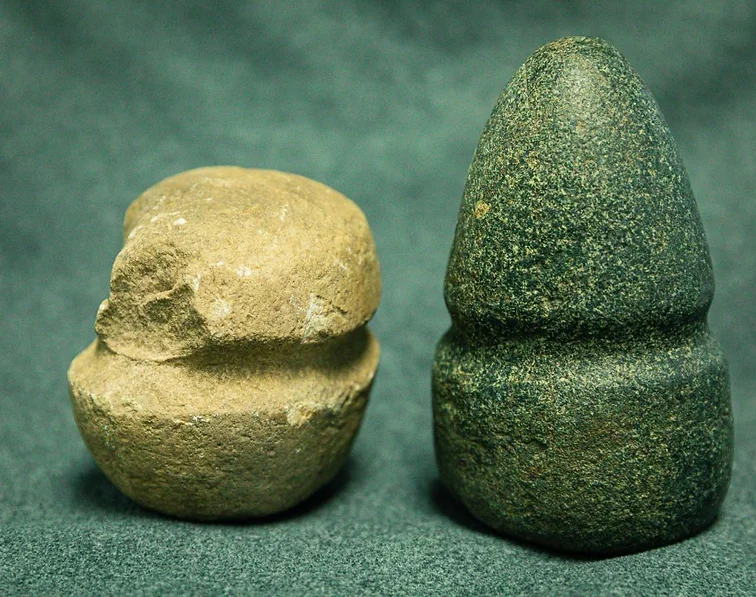
Tomahawk Head
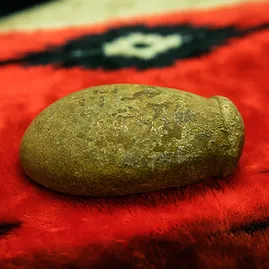
This stone would be bound to a
wooden handle about 50 cm long
using rawhide (strips of untanned
animal skins),
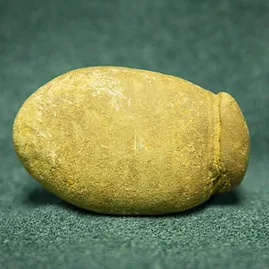
then left to dry until the rawhide dried
and the stone head was very firmly
attached to the handle.
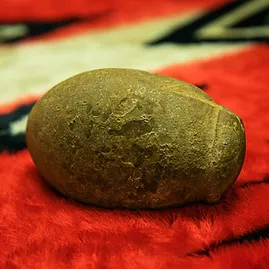
This was also used as a weapon in
hand-to-hand fighting with enemies.
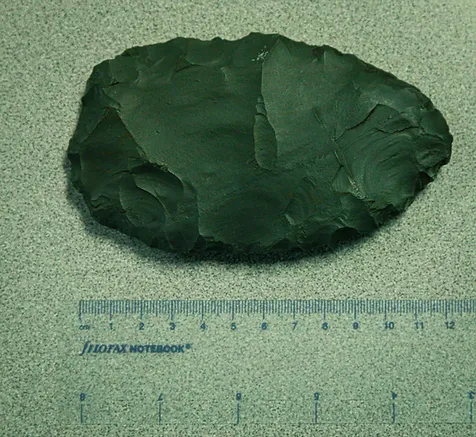
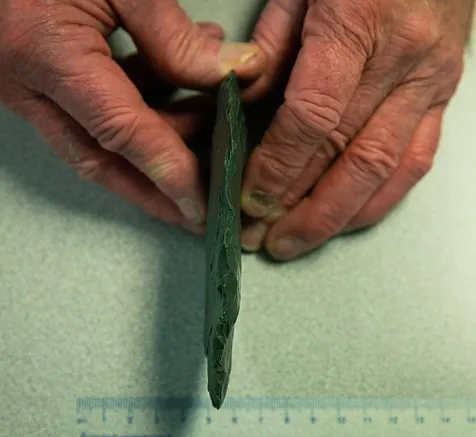
Clovis knife
in leather bag
This is an extremely rare artifact that was picked up by Fred’s uncle on his farm in the Bowden area (approx. 90 km north of Calgary) in the
1930’s. Fred’s uncle was walking through some trees in the fall, kicked at a pile of leaves and the artifact flipped out. He recognized it as
being more than just an ordinary rock and put it away until he learned of Fred’s interest in the indigenous people. He then gifted it to Fred in
the 1980’s.
In the late 1980’s, it was identified as a Clovis knife by Barney Reeves, an archaeologist at The University of Calgary.
Fred shares “Barney told me the following:
– It’s amazing that this was found in one piece on the surface and not buried in the ground. He said something should have stepped on it and
broken it or that water should have invaded a small crack in it, frozen and broken it.
-the Clovis people were the first indigenous people to come to North America. Most archaeologists believe they crossed the Bering land
bridge during the last Ice Age and moved south through an ice-free corridor between Alberta and British Columbia and spread down the
west side of North America. New evidence indicates they may have somehow crossed the Atlantic by raft. The only other place in the world
where this tool making technology has been found is in France and it would be easier to get to North America by crossing the Atlantic than
to trek all across Europe and Asia to the Bering Sea.
– The Clovis name comes from Clovis, New Mexico, where this type of artifact was first found. Since it’s a heavy, cutting tool, they likely
wouldn’t carry it with them on a hunt. They probably stashed it with other items they didn’t need for hunting. He said for three reasons they
may have not returned to the same site. Firstly, the hunt may have taken them much farther than they expected and it wasn’t worth their time
and effort to come back for a few things. Secondly they may have met a band of enemies and been wiped out in a battle. Thirdly, in Clovis
times, they buried their dead and they also buried many things with them for their journey in the after-life, therefore, there could be more
artifacts where this one was found.”
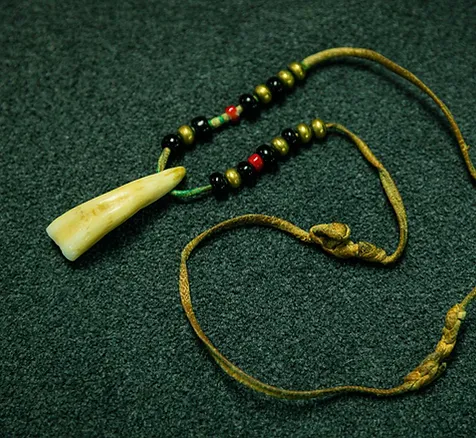
Grizzly bear tooth on necklace
